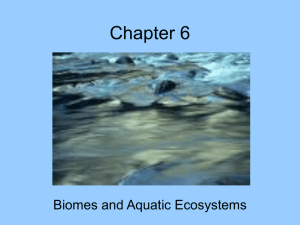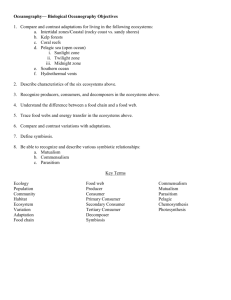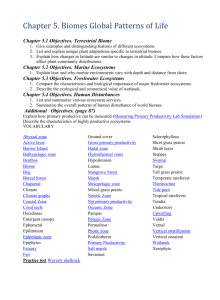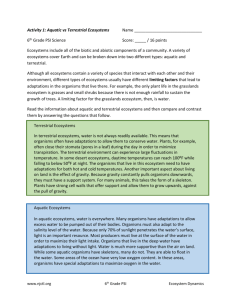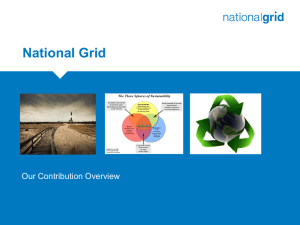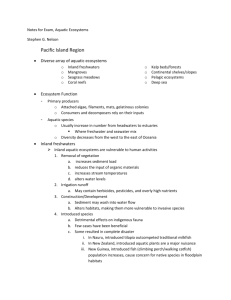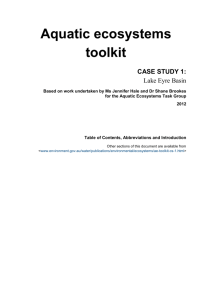Unit 4: Ecology
advertisement
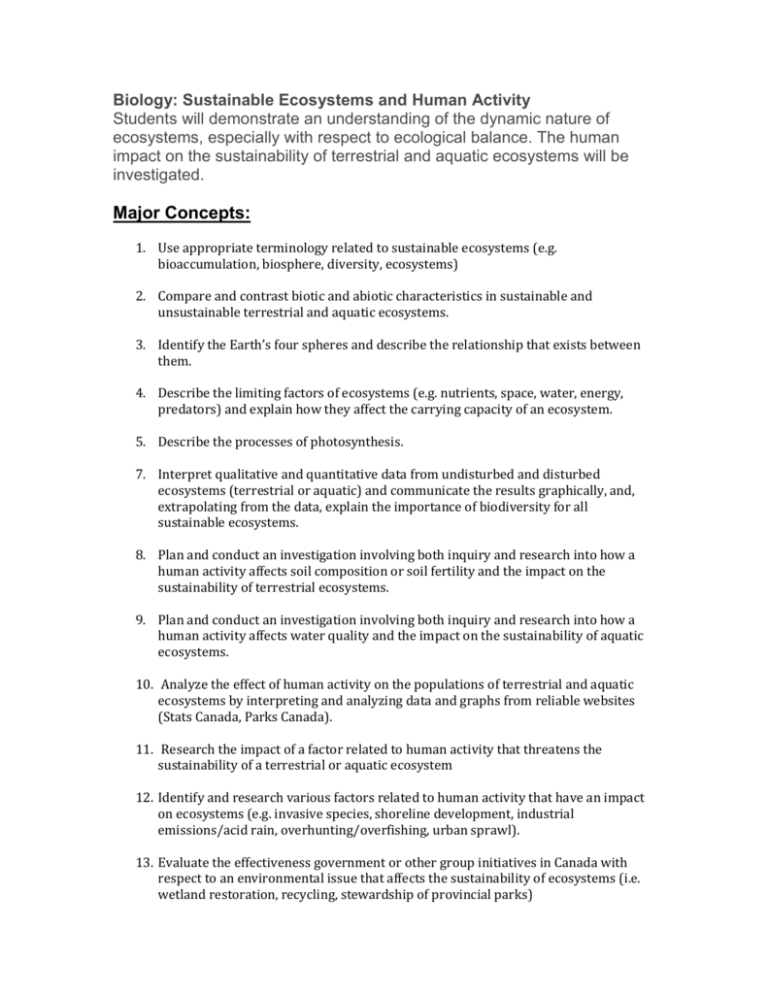
Biology: Sustainable Ecosystems and Human Activity Students will demonstrate an understanding of the dynamic nature of ecosystems, especially with respect to ecological balance. The human impact on the sustainability of terrestrial and aquatic ecosystems will be investigated. Major Concepts: 1. Use appropriate terminology related to sustainable ecosystems (e.g. bioaccumulation, biosphere, diversity, ecosystems) 2. Compare and contrast biotic and abiotic characteristics in sustainable and unsustainable terrestrial and aquatic ecosystems. 3. Identify the Earth’s four spheres and describe the relationship that exists between them. 4. Describe the limiting factors of ecosystems (e.g. nutrients, space, water, energy, predators) and explain how they affect the carrying capacity of an ecosystem. 5. Describe the processes of photosynthesis. 7. Interpret qualitative and quantitative data from undisturbed and disturbed ecosystems (terrestrial or aquatic) and communicate the results graphically, and, extrapolating from the data, explain the importance of biodiversity for all sustainable ecosystems. 8. Plan and conduct an investigation involving both inquiry and research into how a human activity affects soil composition or soil fertility and the impact on the sustainability of terrestrial ecosystems. 9. Plan and conduct an investigation involving both inquiry and research into how a human activity affects water quality and the impact on the sustainability of aquatic ecosystems. 10. Analyze the effect of human activity on the populations of terrestrial and aquatic ecosystems by interpreting and analyzing data and graphs from reliable websites (Stats Canada, Parks Canada). 11. Research the impact of a factor related to human activity that threatens the sustainability of a terrestrial or aquatic ecosystem 12. Identify and research various factors related to human activity that have an impact on ecosystems (e.g. invasive species, shoreline development, industrial emissions/acid rain, overhunting/overfishing, urban sprawl). 13. Evaluate the effectiveness government or other group initiatives in Canada with respect to an environmental issue that affects the sustainability of ecosystems (i.e. wetland restoration, recycling, stewardship of provincial parks)




